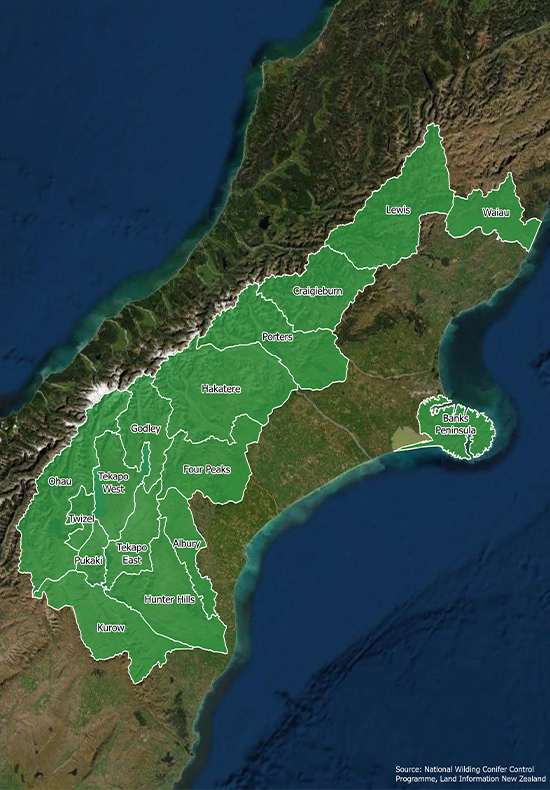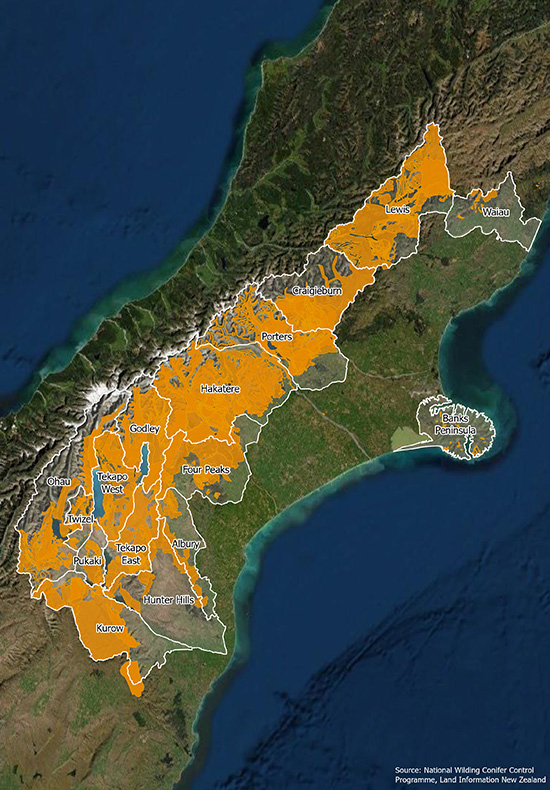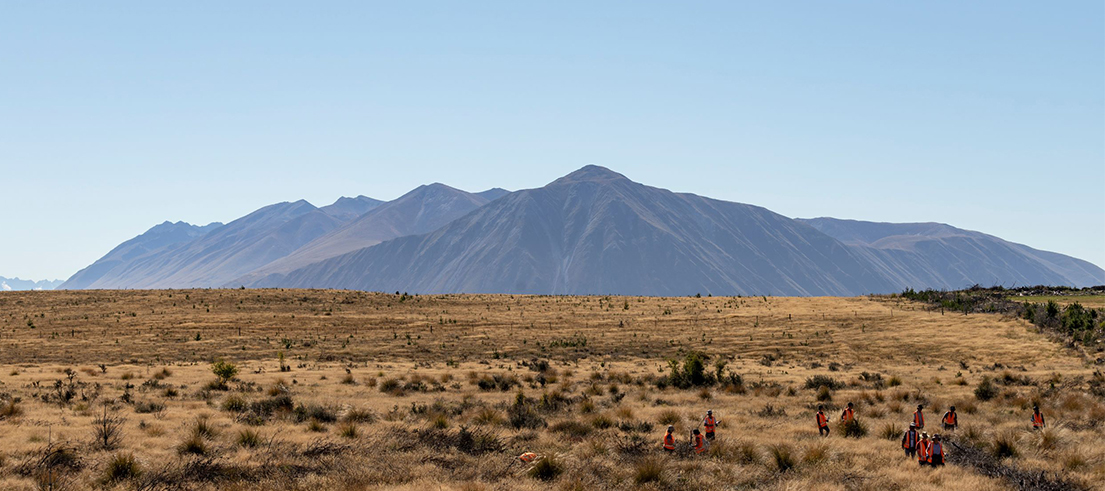
Canterbury wilding pine control update
The National Wilding Conifer Control Programme was established in 2016 to ensure a collaborative, coordinated and effective approach to national wilding management.
The programme is a partnership between central and local government agencies with the farming and forestry industries, landholders and community stakeholder groups.
The goals of the programme are:
- effectively zero the landscape of wilding conifers
- remove seed sources wherever possible
- transition the land back to the landowner or manager for future maintenance.
Prior to the establishment of the national programme, our most vulnerable landscapes and ecosystems were being infested by wilding conifer at a rate of approximately 90,000 hectares per year nationally. Control costs were also increasing exponentially. The infestations and rapid spread were, and in some cases still are, beyond individual landholders’ ability to maintain, let alone eradicate.
The government initially pledged $16M over four years for the first phase of the national control programme. This was used to tackle wilding conifers in the highest priority areas, with the majority being in Canterbury. Budget 2020 allocated further funding of $100M over four years to expand the programme.
Participation in the programme is voluntary, however, most landholders approached have agreed to partner with us in control work. Along with the central government subsidy, we expect a 20 per cent contribution from landholders to help fund any ground control work. This is usually exceeded across the region and reflects the rural community’s recognition and ownership of the problem.
Of the total known infestation area nationally (over 3 million hectares), around 70 per cent has now received at least one round of control work. Repeat control and ongoing maintenance are still needed to remove new growth from seeds already in the ground.
The progress achieved to date means we are now preparing to start transitioning the first areas to landholder control, having removed infestations and done follow-up control to remove emerging seedlings.
Control process
The initial cut of an infestation is the most expensive. The first maintenance sweep must occur within three years to address emerging trees before they reach coning age. This is crucial to break the cycle.
The first maintenance sweep can be nearly as expensive as the initial cut, however, subsequent maintenance sweeps should reduce in cost as the cycle is broken.
Provided we have controlled the seed source, we believe most areas will require one initial cut and up to three maintenance sweeps, three years apart. By this time the seed bank should be exhausted and emerging trees at a minimum.
The Canterbury programme
Environment Canterbury has been actively involved in wilding conifer control since 2003. We partnered with the national programme in 2016, delivering control in Canterbury via 16 active management units that cover over 2.8 million hectares.
Most of the areas controlled between 2016 and 2019 are now in the maintenance phase and have had one sweep. Some areas are receiving a mix of initial, and maintenance works each year.
The Canterbury region has been the recipient of approximately 48.7 per cent of the available national funding to date. This funding has been used to directly engage contractors to control trees. Our team of contractors and management staff have exceeded annual targets every year since 2016.
The Canterbury programme’s success to date is not purely dependent on financial support from central government. Since its commencement in 2016, there has been over $13.6M of contributions from other stakeholders.
| 2016/17 | 2017/18 | 2018/19 | 2019/20 | 2020/21 | 2021/22 | 2022/23 | 2023/24 |
|---|---|---|---|---|---|---|---|
| $2,771,350 | $3,797,119 | $200,000 | $8,102,103 | $20,460,547 | $13,978,627 | $7,922,707 | $3,580,000 |
Please note that the 2023/24 allocation is provisional only. With the reduced funding, a prioritised strategic approach will be required moving forward.
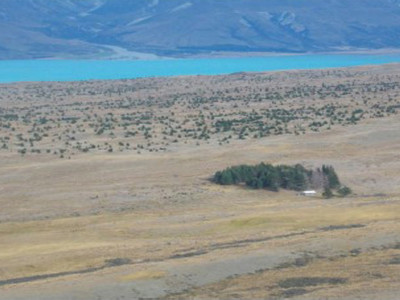
Braemar Station in 2015
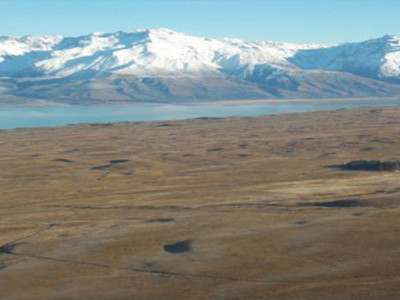
Braemar Station in 2020


